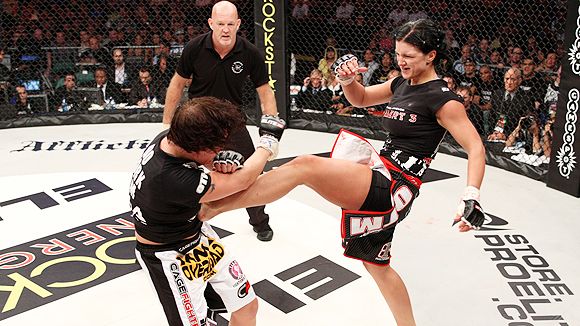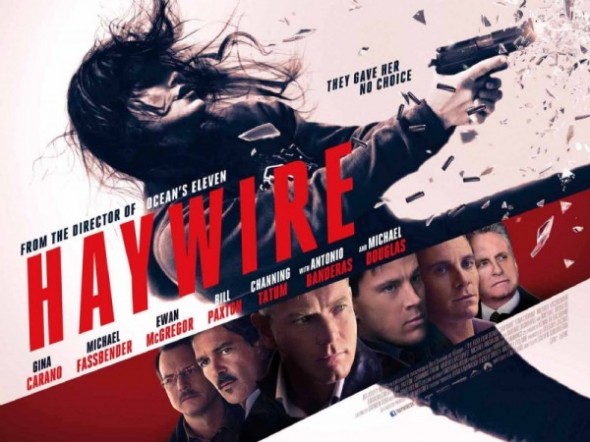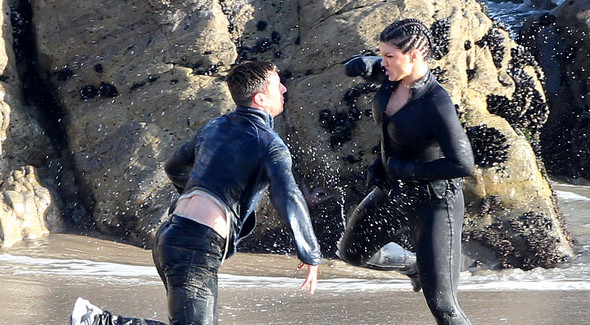Art forms can be roughly divided into the creative and the re-creative. Creative artists (a category that includes writers, composers, choreographers, and visual artists), are makers. They start with nothing and end up with something. Re-creative artists are merely performers. They realize instances of someone else’s preexisting art. This category includes actors, who work from a script, dancers, who work from choreography, and musical performers, who work from a score.
Along with the distinction between creation and re-creation comes a value judgement, or at least an implied one. Ask any writer, they will tell you they are smarter than any actor. And they will be right: actors are dumb. I kid, I kid! But I’m not the only person making the joke. Consider the characters on Friends. Chandler, the writer, is of average intelligence (as is Monica, the chef). And Joey, the actor? And Phoebe, the musician?
The distinction between the creative and the re-creative artist in the popular imagination is the distinction between mind and body, the distinction between spirit and flesh. Creative art is brain work. Motor skills are not required. (Except for basically all the visual arts. Look, I’m not pretending any of this actually makes sense.) Re-creative art, however much thought goes into it, is partially about having quick fingers, or the ability to cry on cue, or elegantly turned calves. It’s part practiced skill, part genetic lottery ticket. It never rises to the level of inspiration. Interestingly enough, within classical music circles (which is already a re-creative culture), this same stigmatization of the body attaches to singers. Consider the old gag, “Where is a tenor’s resonance? In the hole where his brain should be.” Or consider fictional composer-singer relationships like the Phantom and Christine in Phantom of the Opera. Christine is good and the Phantom bad, to be sure — but which of them is smarter? Which is weak, which is strong? Which active, which passive?
The distinction between creative and re-creative art is quite often mapped onto gender, too.
And it is in this context that I suggest we watch the trailer to Steven Soderbergh’s upcoming thriller, Haywire.
A few things are worth commenting on here, but of these by far the most interesting is the leading lady, Gina Carano, seen below hurting someone quite badly. Or, depending on your priorities, quite well.

Carano is not an actress. She’s had bit parts here and there, perhaps most notably in Red Alert 3 and the direct to video Ring Girls, but nothing that screams “give me a star vehicle!” She’s primarily famous for being an MMA fighter, and hot. The bulk of the fame comes from her looks, in fact. You have to wade through two pages of cheesecake on Google image search before you actually get a picture of her fighting someone. But as a fighter, she is no slouch, having racked up a 12-1-1 record in kickboxing and a 7-1 in MMA over a three year professional career. You can see clips of her fights on YouTube, and although MMA is notoriously hard for laypersons to follow, she certainly seems to be kicking butt. That’s the gimmick, then, with Haywire. Watch people get beat up by a real badass pretending to be a fake badass. It’s classic stunt casting. Rowdy Roddy Piper would be proud.
This makes it all the more interesting that the trailer makes no reference to Carano’s fight career. Rather, it tries to sell Haywire as a straight-up action film. Some of the marketing even downplays Soderbergh’s involvement! Check out this poster, which tries to avoid contaminating your fond memories of Ocean’s Eleven with your less than fond memories of Solaris.

If Carano isn’t really an action star, neither is Soderbergh really an action director. He makes some very successful films, but he also makes weird ones, and does weird stuff with non-actors in particular. Typically he intersperses his avant-garde work with polished Hollywood fare that pays the bills and convinces the producers to keep hiring him. For every Ocean’s Eleven, there’s a Bubble. For every Contagion, there’s a The Good German. The presence of bankable stars is not necessarily a decisive factor. The Good German rode George Clooney and Cate Blanchett to a twenty-five million dollar loss at the box office. There’s a lot of famous names up there on the poster. We still don’t know what kind of Soderbergh film Haywire will turn out to be.
However, given that the film was shot in 2010, and probably wouldn’t be released even in 2012 if Michael Fassbender hadn’t turned into the hottest thing since toast in the interim… we could probably guess.
 What does all this have to do with acting vs. directing? And with stunt casting? Well, most people who are paying attention will immediately peg Haywire as a sort of companion piece to Soderbergh’s art house exploitation experiment The Girlfriend Experience, which provided a non-fornicating leading role to the porn star Sasha Grey. The Girlfriend Experience tries to sell itself as a frothy, naughty movie. (Gaaagh, that tagline. So lame.) It’s actually a chilly, cerebral, vaguely boring one (although the boredom shouldn’t be thought of as a defect in this case), with Important Ideas about the commoditization of love, friendship, art, and — somewhat surprisingly — religion.
What does all this have to do with acting vs. directing? And with stunt casting? Well, most people who are paying attention will immediately peg Haywire as a sort of companion piece to Soderbergh’s art house exploitation experiment The Girlfriend Experience, which provided a non-fornicating leading role to the porn star Sasha Grey. The Girlfriend Experience tries to sell itself as a frothy, naughty movie. (Gaaagh, that tagline. So lame.) It’s actually a chilly, cerebral, vaguely boring one (although the boredom shouldn’t be thought of as a defect in this case), with Important Ideas about the commoditization of love, friendship, art, and — somewhat surprisingly — religion.
It’s also kind of a prank on the audience. Sasha Grey takes her clothes off in the film. Not very much, but she does. This is likely the reason many people end up watching the film. Why else cast a porn star? Other people who watched The Girlfriend Experience were curious about whether or not Grey could act. She does act in the film, although again, not very much. Between the nudity tourists on the one hand and the outsider-art tourists on the other, we can probably account for the film’s entire audience. Both camps got what they paid for. But both were thoroughly snookered.
Think about it. If you want to see Sasha Grey naked, why would you go to a mainstream movie? If you’re reading this, you have access to the internet, which means you have that power to see Sasha Grey naked AT ALL TIMES. Want to see her act? The internet can do that for you too. You can even see her act with her clothes on, if you’re willing to put in a bit more effort. The only reason to see The Girlfriend Experience in one of the typical mainstream cinema venues (i.e. a movie theater, a Netflix disc) is to glaze your voyeurism with a thin but expensive veneer of respectability. It just seems so much classier that way, right? Why, it’s almost exactly like paying a high-end prostitute to go out to dinner with you before you bang. Take that, audience.
And Haywire is probably going to be something similar. If you wanted to see Gina Carano hurt somebody, you could have watched that happen live ringside. But that’s not what you want, not if you’re like most of America. Rather, you want an action movie. Violence at a remove, and in a glossy package that you don’t have to feel weird about consuming. I’ll call it now: Haywire will be too glossy and too removed. Critics will say that it’s all surface, no substance. They’ll praise the cinematography, but complain you never get a sense of who this character is beneath the surface. And that will be exactly what Soderbergh was going for.
 So much for what these films say about their audience. Now let’s consider what they say about Soderbergh. Like I mentioned, he seems to have a particular affinity for non-actors. This is maybe an aesthetic choice: the man loves his affectless line readings, I guess. But there also seems to be something borderline ideological about it. Why Grey and Carano, in particular? Why give star vehicles to a professional f___er and a professional fighter, in particular, and not a fireman or a fishmonger? And why both women? (It’s worth noting that Soderbergh’s next film, which is set in the world of male stripping, does not seem to feature any actual male strippers.) I suspect that at some level, Soderbergh is trying to distance himself from the re-creative, bodily side of filmmaking as much as he possibly can. An actor or actress is still a creative artist to the degree that they create the illusion that they are someone they actually aren’t. For Grey and Carano, in their first careers, that was never the case. Porn stars and cage fighters are professional bodies in a way that most performers are not — ballet is a better analogy for what they do, actually, than either acting or music. When a choreographer is inspired by a principal dancer, we say that the ballet was “created on” the dancer. Grey and Carano do not star in these films, rather, the films were created on them. Soderbergh needs them to be only bodies. They were hired not as actresses but as muses, as raw material on which the director could work his creative will, a will that is intellectual, artistically reputable, and in its own artsy way, kind of macho. And possibly kind of gross. The question, really, is whether Soderbergh gets this final level of the joke.
So much for what these films say about their audience. Now let’s consider what they say about Soderbergh. Like I mentioned, he seems to have a particular affinity for non-actors. This is maybe an aesthetic choice: the man loves his affectless line readings, I guess. But there also seems to be something borderline ideological about it. Why Grey and Carano, in particular? Why give star vehicles to a professional f___er and a professional fighter, in particular, and not a fireman or a fishmonger? And why both women? (It’s worth noting that Soderbergh’s next film, which is set in the world of male stripping, does not seem to feature any actual male strippers.) I suspect that at some level, Soderbergh is trying to distance himself from the re-creative, bodily side of filmmaking as much as he possibly can. An actor or actress is still a creative artist to the degree that they create the illusion that they are someone they actually aren’t. For Grey and Carano, in their first careers, that was never the case. Porn stars and cage fighters are professional bodies in a way that most performers are not — ballet is a better analogy for what they do, actually, than either acting or music. When a choreographer is inspired by a principal dancer, we say that the ballet was “created on” the dancer. Grey and Carano do not star in these films, rather, the films were created on them. Soderbergh needs them to be only bodies. They were hired not as actresses but as muses, as raw material on which the director could work his creative will, a will that is intellectual, artistically reputable, and in its own artsy way, kind of macho. And possibly kind of gross. The question, really, is whether Soderbergh gets this final level of the joke.
Another question is whether he bothered to fill Carano in on it. I’m only guessing, of course, but if I’m right, his artistic vision depends on making her look as vacant and affectless as possible. It’s not that I think he’s being mean or unfair to her, exactly. At the end of the day, she’s getting a starring vehicle. If all goes smoothly, it could be her ticket to a life of fame, fortune, and not-getting-punched-in-the-face that MMA could never offer her. If she does well, and the movie does well, she’s got it made. If she ends up coming across as vacant and affectless, well… first of all, that’s not even necessarily a deal breaker in today’s Hollywood, and second, if she turns out to be a bad actress that’s hardly Soderbergh’s fault. She might end up looking bad. But plenty of people would take that chance. They line up to take it every day.
If it goes badly, though, well… let’s hope she stays philosophical about it. Or else Soderbergh may find himself wishing that he’d stuck to screwing with porn stars.

I was watching John Boorman’s 1968 film Point Blank the other day, and the commentary track was Steven Soderbergh asking Boorman leading questions about movie things – actors, music, lighting, etc. One thing Soderbergh really praised Boorman for was Lee Marvin’s phsyicality. Lee Marvin is a menacing and imposing force in the movie, and his action sequences are really organic. There’s a sequence where Marvin uses his huge feet to destroy a telephone switch – a scene that would have to be written differently for a lesser actor. So I guess that’s the sort of thing Soderbergh is interested in – immersing the player in the role. Why get an actor to be a martial artist when you can get a martial artist to be an actor? Why get an actor to take her clothes off when you can get a professional disrober to be an actor? I guess he feels like there’s something “real” about it – a subtle touch that you can’t get any other way. It certainly makes more sense to cast Gina Carano as a badass than someone like Kirsten Dunst, for instance. And I do think that Jet Li brings something to his martial arts movies that Keanu Reeves can never have. I’m not familiar with Sasha Grey’s work, but I do know that adult performers tend to exude a certain confidence when they’re naked that most normal women do not, which could also be valuable to a film.
Also, Chandler Bing was a process accountant for most of his career, until he suddenly quit and went into advertising. However, during the what-if? episodes, where Monica was fat and Joey was famous, Chandler was an unsuccessful writer.
I find the idea creative and re-creative art to be an interesting way of breaking it down – although I felt your definition to be a bit wanting. Particularly, I feel like most art doesn’t really have a hard and fast line between “totally unique” and “interpreting someone else’s work.” For example, how would you define, say, an improv actor? To some degree, he/she is interpreting someone else’s work – suggestions shouted from the audience, developments from other actors participating in the same skit, and maybe a broad per-determined structure, like in shows like Curb Your Enthusiasm, but the art is still creative in that nobody but the actor really knows what the next line or action will be. Or what about artists involved in highly collaborative art forms, like a director, who is reliant on the work of writers, actors, cinematographers, editors, etc, but who are usually the only person to oversee a creative process from beginning to end and ensure that one intact vision is created? Or what about, say, a screenwriter who adapts a novel? If it’s a direct adaptation, like the Harry Potter movies, that could pretty undeniably classified as re-creative, but take a situation like Charlie Kauffman’s adaptation in “Adaptation,” in which the final movie bears only a passing resemblance to the source work, and, well, how would you classify that?
I’m not trying to nitpick, I just find the creative vs. re-creative element of your argument very interesting, and would like to see a piece that elaborates on that more.
The first draft of this piece had a whole section about how the whole creative/re-creative thing is a false dichotomy, for a lot of the reasons you bring up here. Improvisers in various traditions (including comedy, but also jazz, bluegrass, commedia dell’arte, etc.) have one foot firmly planted in each camp. Actors do create their performances, just as you suggest. And all culture is remix culture. The writer of an “original” screenplay draws on preexisting works just as much as the writer of an adapted screenplay, just less consciously and less obviously. Directors are considered to be creative artists nowadays — that’s the whole argument behind auteur theory, which has become the common-sense position within film criticism — but back in the golden age of the studio system they were mostly seen as managers.
My point here is more that, despite the problems with the distinction, it does tend to shape the way that our society deals with artists. Being a creator is inherently more respectable than being a re-creator. Nobody makes dumb-director or dumb-composer jokes, but dumb-actor and dumb-musician jokes are plentiful.
I think you can see this dichotomy break down even within the smaller groups — e.g. rock music has dumb drummer jokes while the singer/frontman of the band is seen to be a creator.
It’s also interesting to note that, because she’s off filming movies and being famous, Gina Carano hasn’t had an actual MMA fight in over 2 years. So maybe the stunt-casted “authentic” non-actor becomes just another actor by the very process of putting her in a movie.
Now I’m also thinking of how directors like Eisenstein or the neo-Realists would use people who weren’t trained as actors in their films to be more authentic to their social realist purpose… a very thought-provoking article.
Dunno about anyone else, but I make tons of dumb-director jokes about Uwe Boll.
Ah, but the joke isn’t that Uwe Boll must be stupid because he’s a director. Rather, the joke is the fact that Uwe Boll is allowed to direct films, which suggests that the world is stupid.
All media is remediation. The creator/interpreter distinction is non-existent, an invention of the bored socialites of the 1800s who needed people to idolize. Barthes is rolling in his grave.
i haven’t seen either of mr. soderberghs efforts but i doubt he could do better (story-wise or in directing) than these two short clips:
sasha grey can in fact act while clothed:
http://www.youtube.com/watch?v=Gxb7b0jGZvc
and probably the last competitive fight ever of gina carano:
http://www.youtube.com/watch?v=bOAs68YcTzs
First clip was hilarious. Kinda dumb up until the final line, at which point I dehydrated myself by laughing so hard.
Second clip is blocked in the US.
yeah i forgot CBS will hardly let you US guys slip and watch their high quality stuff for free…but it’s nice to be on the right site of border for once :)
anyways there are ways to view blocked youtube content if you are curious enough
Nice article. I think you can see the distionction (and unfortunately the implied value judgment) of the creator:re-creator::mind:body relationship present in a lot of situations: sports (coach:player), war/strategy (general:soldier), business (CEO:worker), etc.
To your point that the distinction is often mapped onto gender: from the trailer it looks like the role is largely gender-neutral, which makes the choice even more interesting. I think I remember an old article on this site talking about the difference between having a woman in a “woman hero” role (e.g., Angelina Jolie in anything) and having a woman portray a “regular” hero (e.g., Sigourney Weaver in ‘Alien’), which (if it exists) could be relevant.
Unrelated to your point, this is the first I’ve heard of this movie and it looks at least somewhat interesting from the trailer, although the plot seems to be a discarded draft of one of the Bourne sequels. I’m especially excited about Bill Paxton’s triumphant return and Antonia Banderas’s cameo as The Most Interesting Man in the World.
An interesting twist which reinforces “the body” aspect of your piece; supposedly Gina has been voice dubbed for the whole movie. She doesn’t even get to act but is just a physical presence. Sad. Mind you, this is hollywood which has never made sense about anything.
Holy balls, are you serious? That’s insane. I didn’t think I had anywhere NEAR that much of a point.
I couldn’t find anything definitive on this from the first page of Google search results; just speculation along these lines: http://www.tmz.com/2012/01/10/gina-carano-haywire-voice-dubbed/
But if this is true, then, wow.
Update: “Gina Carano confirms her voice was altered for ‘Haywire.'” That’s “altered,” not “redubbed by a totally different actor”:
http://www.slashfilm.com/gina-carano-confirms-voice-altered-haywire/
Incidentally, if you follow that clip you can watch the full version of the diner fight scene from the trailer, and as fight scenes go it looks pretty badass: lo-fi enough to feel “real” and “brutal,” but clean and rhythmic enough to have a narrative through-line. I wouldn’t say I’m *excited* about the film now, but if I came across it on late night TV I would totally end up watching all of it.
Even in completely scripted works, good acting is creative, both in the preparation and in the performance. The medium is the actor him- or herself, so it’s not easy to see the creative process, the way you can with writing or painting.
— an actor.
One of my favorite things this article let me watch was how it took the Soviet Union an armada of battleships, a fleet of weaponized zeppelins, and I believe two nuclear weapons to destroy the Statue of Liberty — which, to scale, must be about 3,000 feet tall.
Thankfully, the pedestal survived, so they got to build an equally gargantuan statue of Lenin in its place.
Red Alert is awesome.
While you hint at the question of whether Soerburgh has “women issues” or something, I’m not sure we can really find an answer. And that kind of irks me. Why is it that he only uses women as bodies? Is it a commentary, or is it because he’s (perhaps unwittingly) falling into the same pattern of objectifying/ commoditizing/ etc. women’s bodies that media often follows?
I’ll admit, though, for a while, I kept confusing Carano with Tricia Helfer (Number Six from BSG) because of a very similar facial structure.
Which actually leads to an interesting connection. I’m not sure if it’d be considered a SPOILER for BSG to go on, but there’s the disclaimer.
Anyhoo, so Number Six is an “object” within the show’s story itself- she’s a Cylon, and thus a human-made and designed robot, albeit a very intelligent one. Of course, that show is big on the “what is consciousness” thing, as a few previous articles on the site stated, but I guess it’s just kind of interesting the person I was thinking I was seeing in the trailer played a DELIBERATE object in a series, and that the actual woman in the trailer is an object in the process of the making of her film.